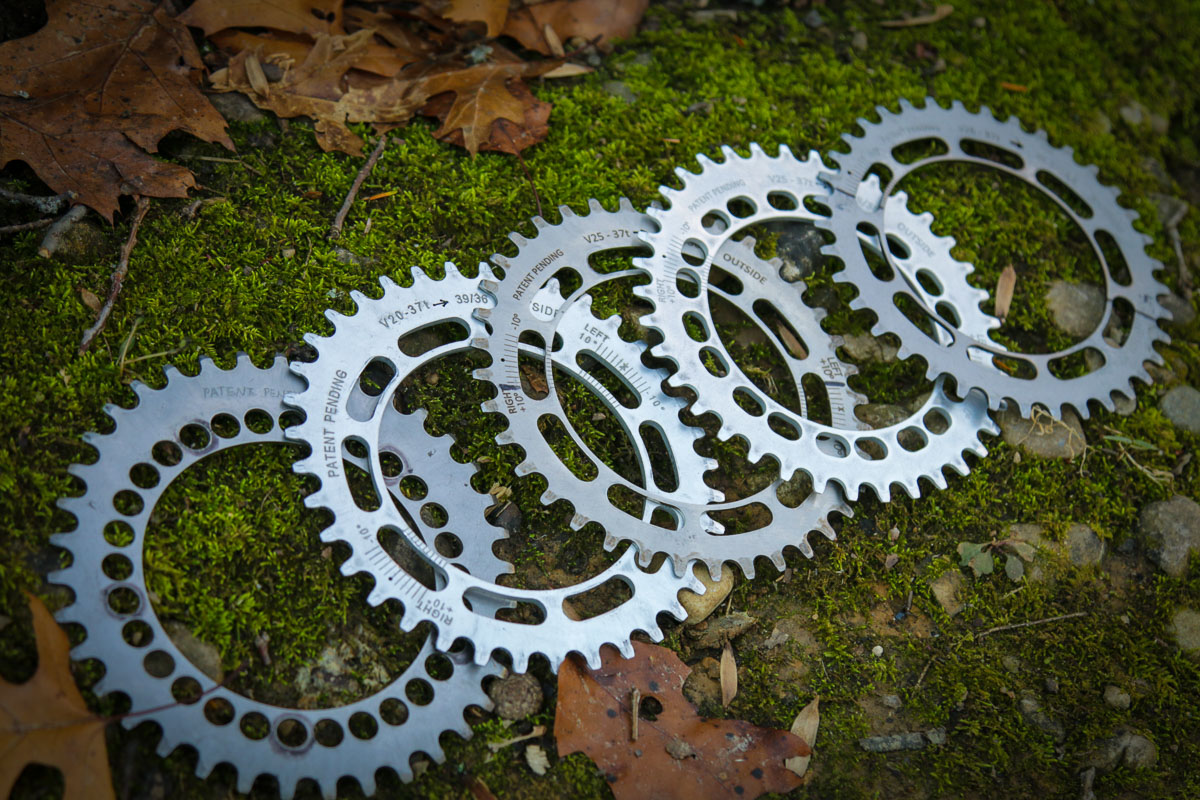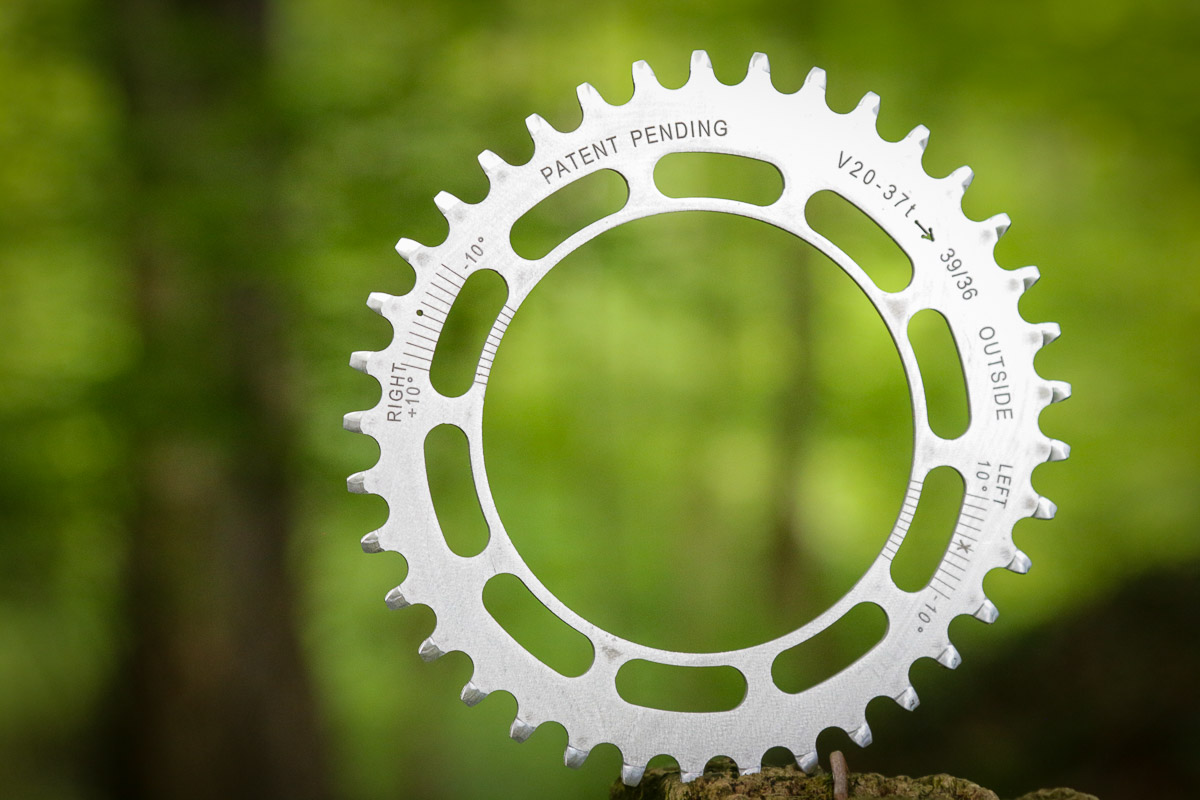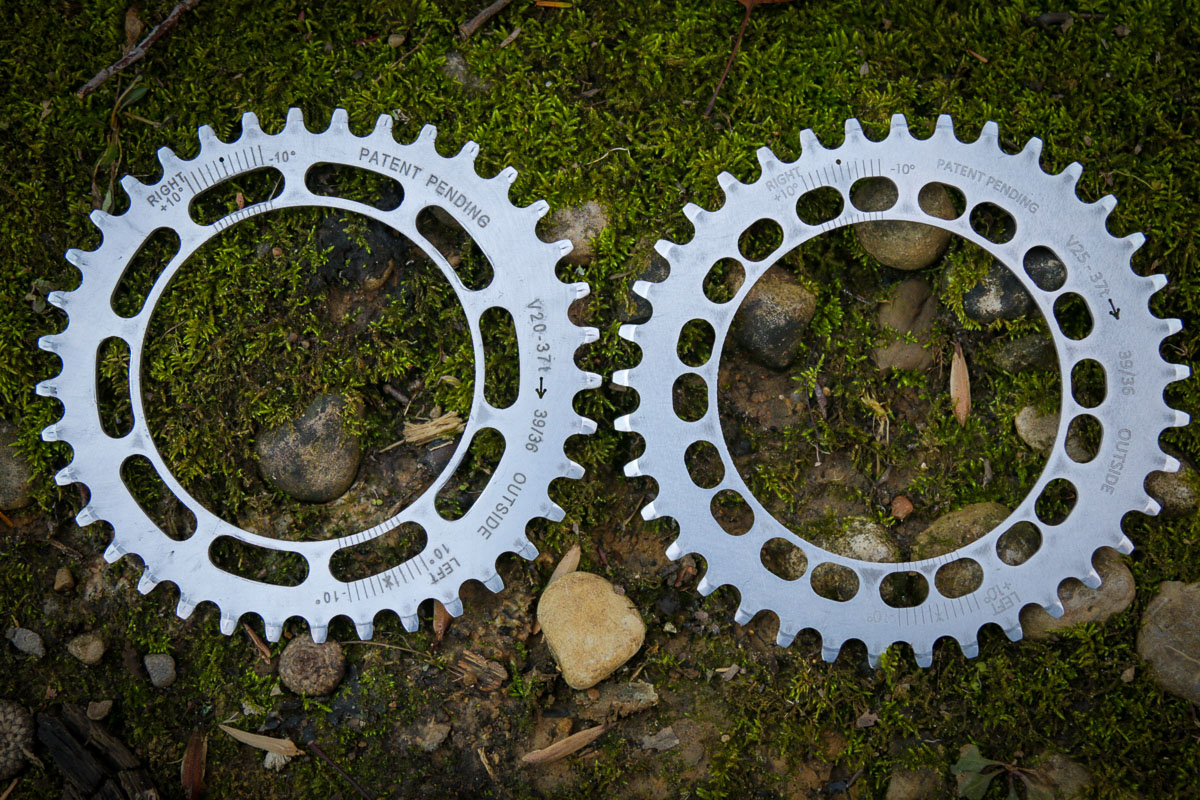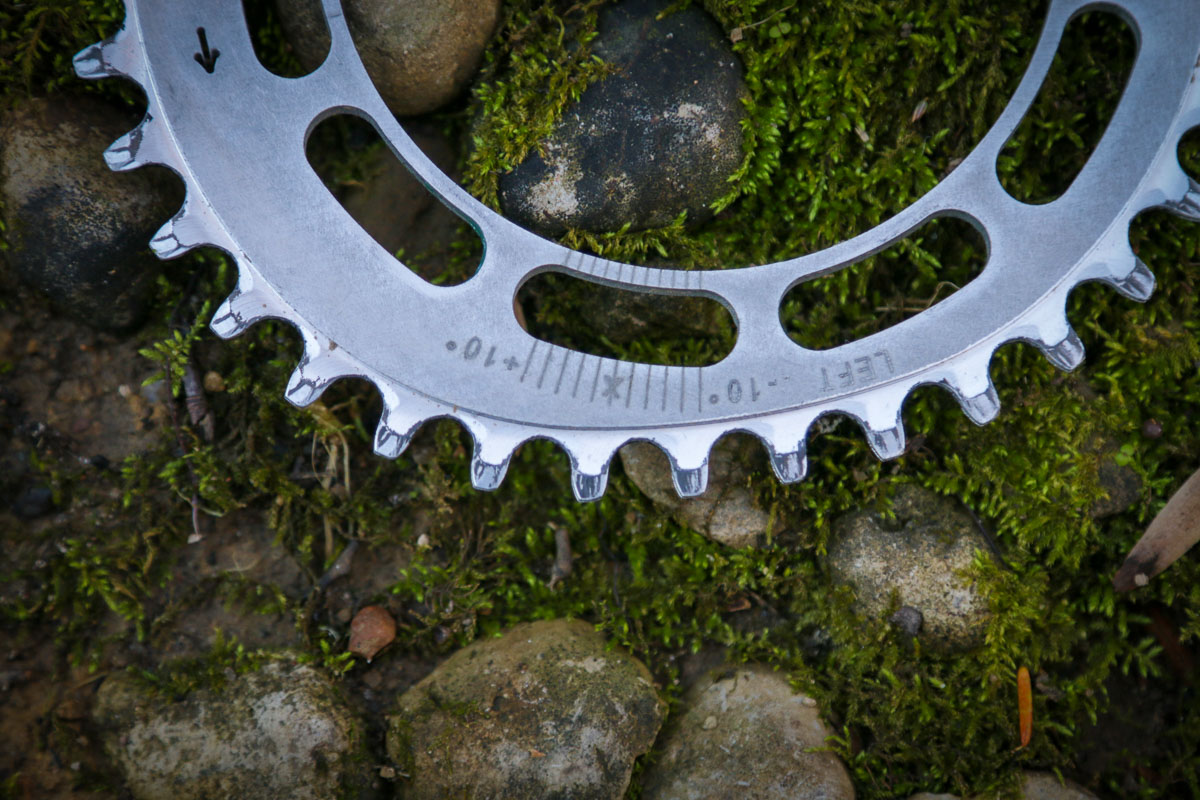“There’s no way this thing will actually work.” That was the thought going through my head almost every step of the way during this review. The concept is just so weird to even wrap your head around it. We’ve all seen oval rings or some variation, but all of those rings offer symmetry for each leg. The Spreng Reng is completely different, and that’s the point.
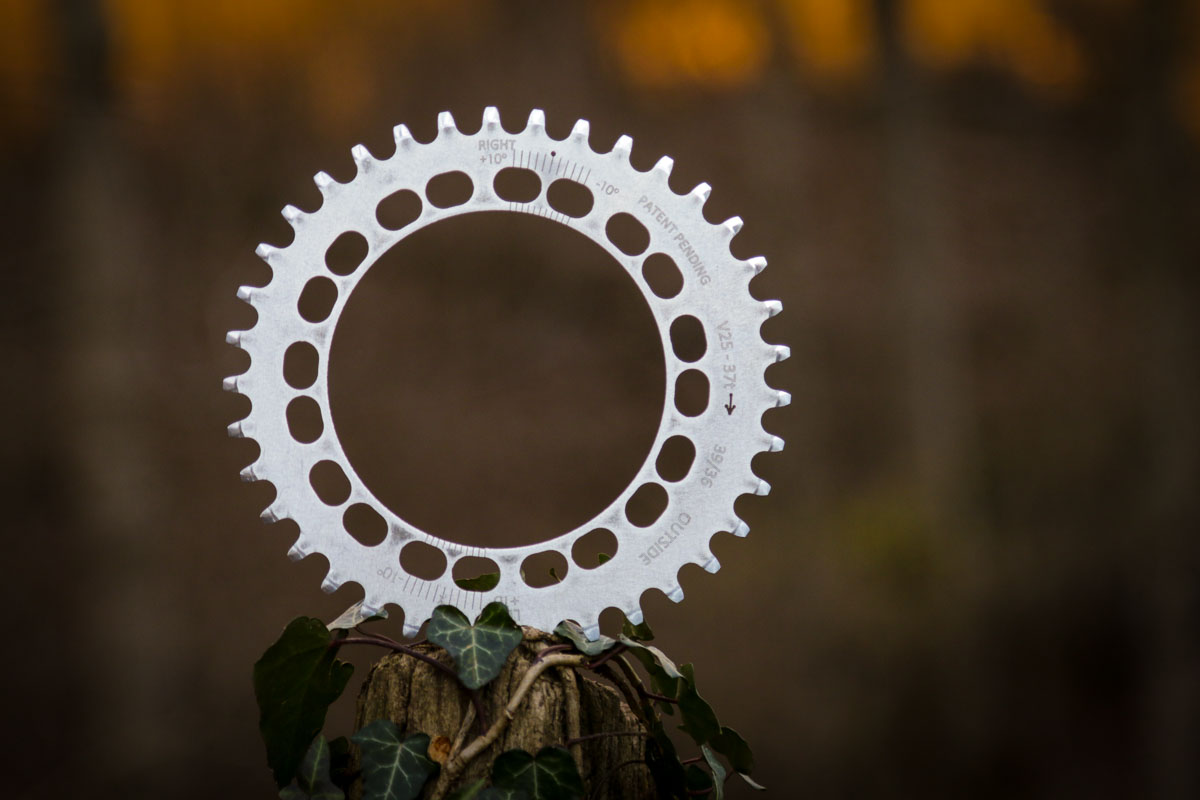
Theory
As I touched on in my last post in June, the Spreng Reng is the brainchild of Doug Brown Jr. who calls himself a chainring connoisseur. Coming up with the idea of the Spreng Reng was one thing, but designing, prototyping, and explaining how the ring actually works is a whole different story. Throughout the project, Doug has enlisted the help of mechanical engineers like Josh Yablon with Paul Hammerstrom Design to turn his wild idea into reality.
The initial theory of the ring is that the combination of the 39t for your dominant leg and 36t for your non-dominant leg actually allows you to turn the pedals at a higher cadence but with less effort, resulting in improved climbing. This dynamic ratio allows you to power through the larger radius faster than you normally would, which briefly accelerates the bike, then you get a bit of a break with the smaller radius, which helps to keep your cadence up. Essentially, you are able to pedal through the larger radius at the higher cadence provided by the smaller radius.
This is then a give and take; the smaller radius side allows you to speed up your cadence, while the larger radius side then transfers that higher cadence into higher speed through more gear rollout. The result is supposedly the ability to ‘spin’ a harder gear than you would typically run with less fatigue.
Doug contends that this ring also reduces the amount of work in the 36t section thanks to more mechanical advantage and an effectively longer crank arm since the distance between the pedal and the point of work (chainring teeth) is 6mm longer in the 36t zone than the 39t zone. He also claims that other ring designs offer either increased gear speed or gear torque multiplication, but not both at the same time. But at the same time, he says that “this ring is not magic. We’re not breaking the laws of physics here.”
First impressions with V20
Ultimately, what I experienced with the V20 chainring in the last story was one of Doug’s biggest hurdles. That chainring did seem to provide benefits in terms of higher cadence and increased speed, but the resulting ride feel could be best described as “lumpy or lopey”. As the chainring would morph from an effective 36t to 39t profile, the change in radius led to what Doug refers to as the “foot stab” feeling just before the deadspot for the non-dominant leg. For me, this resulted in a ride that would leave the bike pulling to one side as the chainring went in and out of the power stroke. The more power you put down, the more the bike seemed to move. In every one of my tests, the V20 ring was faster than a standard round ring, but the ride was not something I would want to live with.
Getting Smoother
Enter V25 (and V26, and so on…). By shortening the 39t power stroke by two teeth, and slightly enlarging the dead spot radius (increasing from a 35t to 36t profile in this area), the V25 is a trade off in terms of outright performance for a smoother pedal stroke. On the road, the difference is remarkable. Thanks to the smoother profile, the V25 is noticeably better in terms of ride feel and feels a lot more like a normal chainring – but the benefits still seem to be included.
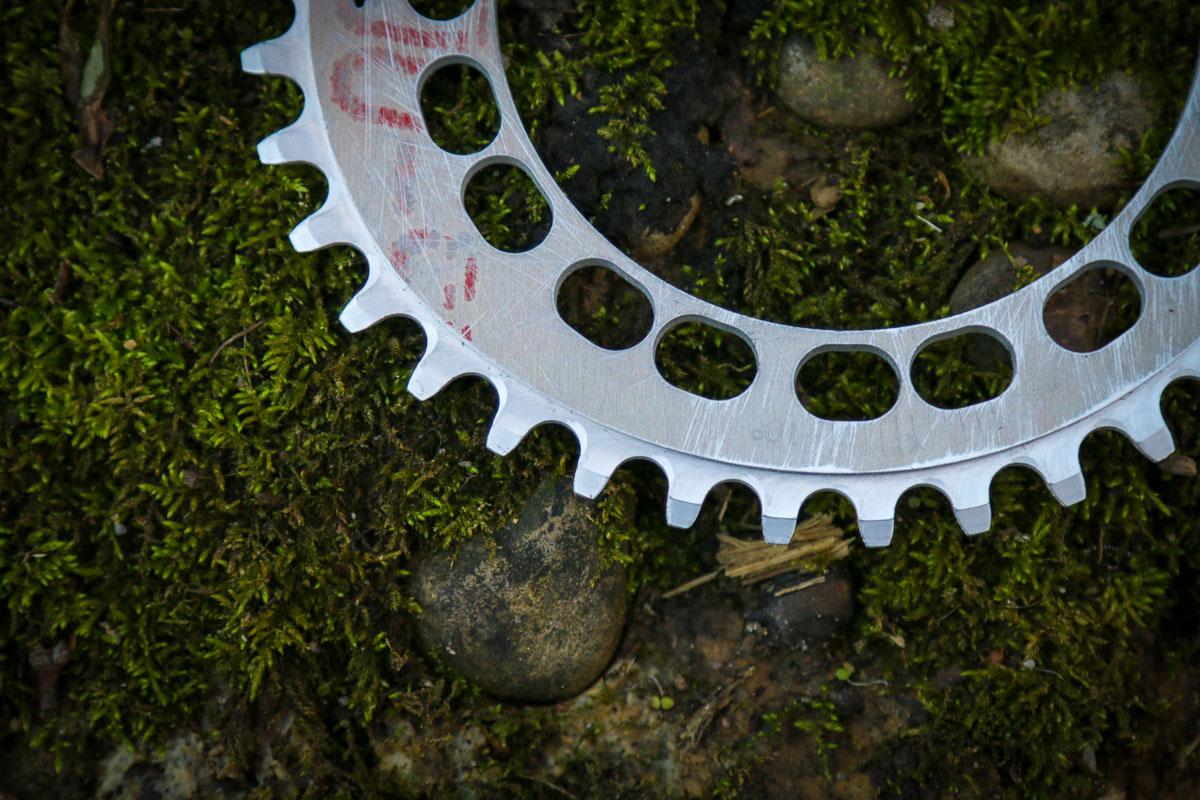
Doug pointed out that they had an ‘aha’ moment once they started making the V20 rings out of thicker aluminum because it required an interior machined shoulder. This shoulder made the flat spots in the ring design (which caused that lopey feel) much more visible than in their previous stainless steel prototypes or drawings, and led to the rounder profile of the V25. After dertermining the cause of the “foot stab” , the solution was implemented by Josh Yablon’s further refinement of the design. Doug states that once they identified the cause, their greatest concern was figuring out a way to solve the issue within the constraints of the Spreng Reng’s design and the chain ring’s pre-determined chain pitch dimensions.
Just like the V20, and the prototype I rode before that, the V25 encourages almost forces you to ride a higher gear than you would normally select for the terrain. This is coupled with an increase in cadence that allows you to turn over the larger profile of the power stroke. The V25 combines 75° of rotation in the 39t power stroke, and then transitions to the smaller 36t radius for 199° of rotation, before transitioning back to 39t (changed from 93° and 124° respectively). V25 also changes the position of the transition area between the 36 and 39t profiles from 10° to 53° in relation to the dominant leg crank arm. Doug points out that this was not conducive for dead spot radius reduction nor power output, but had to be done to smooth the pedal stroke.
| Chainring | Average Speed | Maximum speed | Lap Time | Lap Notes |
| V20 36-39t | 15.7 mph | 33.8 mph | 59:17:00 | One construction crew with one lane blocked, had to stop |
| V25 36-39t | 16.2 mph | 37.3 mph | 57:40:00 | Two construction crews with one lane blocked, had to stop at one, slow for the second. Traffic was crazy at the end due to school letting out. |
| 38t Round Ring | 15.5 mph | 33.4 mph | 1:00:15 | Lighter traffic, construction crews were done for the day. Colder, added a vest. |
Testing, Testing
In order to test the rings for myself, I’ve done a number of less-than-scientific tests – though every time the Spreng Reng came out on top. That’s regardless of whether I started with a round ring during back to back testing, or finished with the round ring, and even true when I was consciously trying to go faster with the round ring.
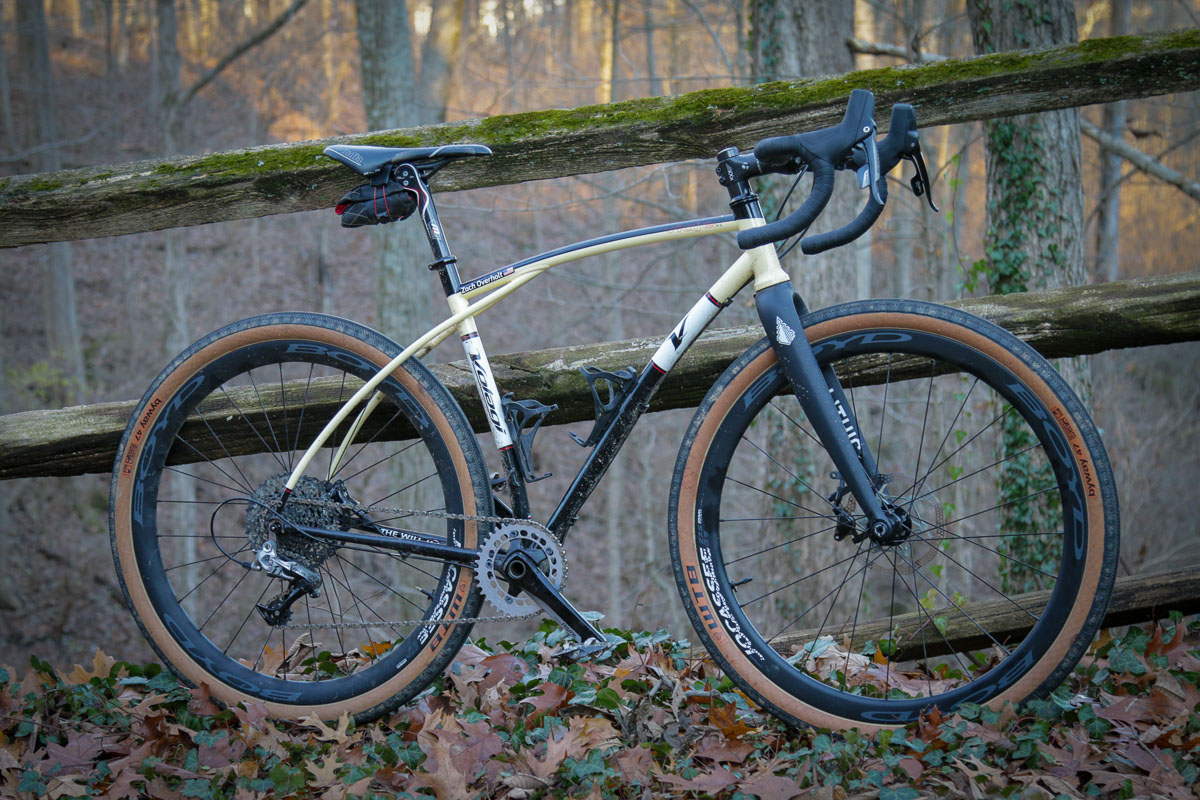
My latest test is outlined in the chart above, and started with a V20, then the V25, and finished with a round 38t ring to split the difference of the 36-39t Spreng Reng profile. Each lap was run on the exact same bike set up with the exception of the chainring, and the exact same 15.59 mile loop out on the road. These laps were all run back to back to back, with enough time in between to change out the ring and catch my breath. Since this was open road testing, the traffic conditions weren’t exactly the same, but interestingly, the lap with the most traffic and delays was actually the fastest – with the V25.
Obviously, a single rider with a handful of tests hardly makes for scientific testing, but it was interesting to see that in all of my testing, the Spreng Reng was consistently ahead – even when it actually felt slower. On the last lap, it was getting colder, and there was a threat of very cold rain, so I consciously tried to pick up the pace to make it home more quickly. To me, it felt like the round ring was much faster on the flats, but looking at the results, it was actually slower in most of the sectors. And in spite of trying, I didn’t make it home any faster.
Also of interest, the V20 was actually the fastest ring up the steepest climb on the loop. We’re only talking a few seconds on a two-minute climb, but it brings up an interesting point. The V20 has more dead spot radius reduction than the V25, which provides greater benefit from the ring. The tradeoff is that this increases the lumpy feel of the pedal stroke, so you seem to actually be giving up a bit of performance on the steepest climbs from the V20 to gain the smoother feel of the V25. However, that was really the only spot on the course where it was faster, with the V25 faster overall.

V26… and beyond?
Which brings us to the V26. Before I had even finished testing the V25, Doug had already sent a V26, which narrows the difference between the two tooth profiles from 3 to 2t. Try wrapping your head around that. The thought is that this would further smooth the pedal stroke though at the expense of some of the ring’s benefits. Doug thinks that this could lead to use as an outer ring as well, potentially with the V25 as an inner ring. Or for use with 1x drivetrains. Since all of my testing was done as a 1x system, I will say that I noticed it seemed to be harder to find the ideal gear ratio in more situations than with a round ring. The Spreng Reng encourages you to ride a harder gear, and sometimes that means jumping to the next gear on the cassette, which is a little too big. Doug claims a smaller tooth variance design would lessen this effect, making it a better option for 1x.
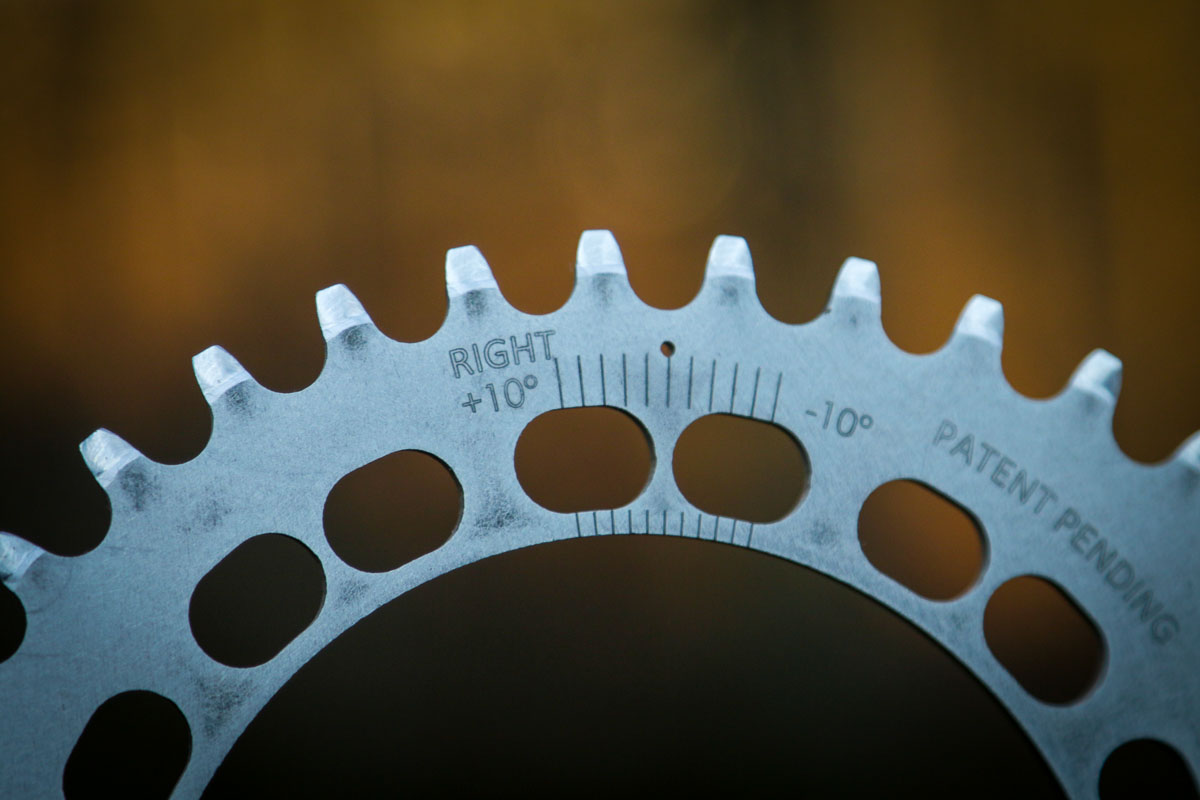
It is also not the easiest ring to mount, thanks to the ‘banana holes’ – but that would change for production. While the banana holes were good for testing different positions for prototyping, they require far too much torque to prevent the chainring from slipping and would never work with lightweight cranksets, rings, and hardware. Because of that, if this ring ever makes it to production, Doug envisions it with single chainring holes lined up in a way so that each successive position corresponds to one chainring tooth. V25 had a slightly revised hole pattern, but even these would allow the ring to slip.
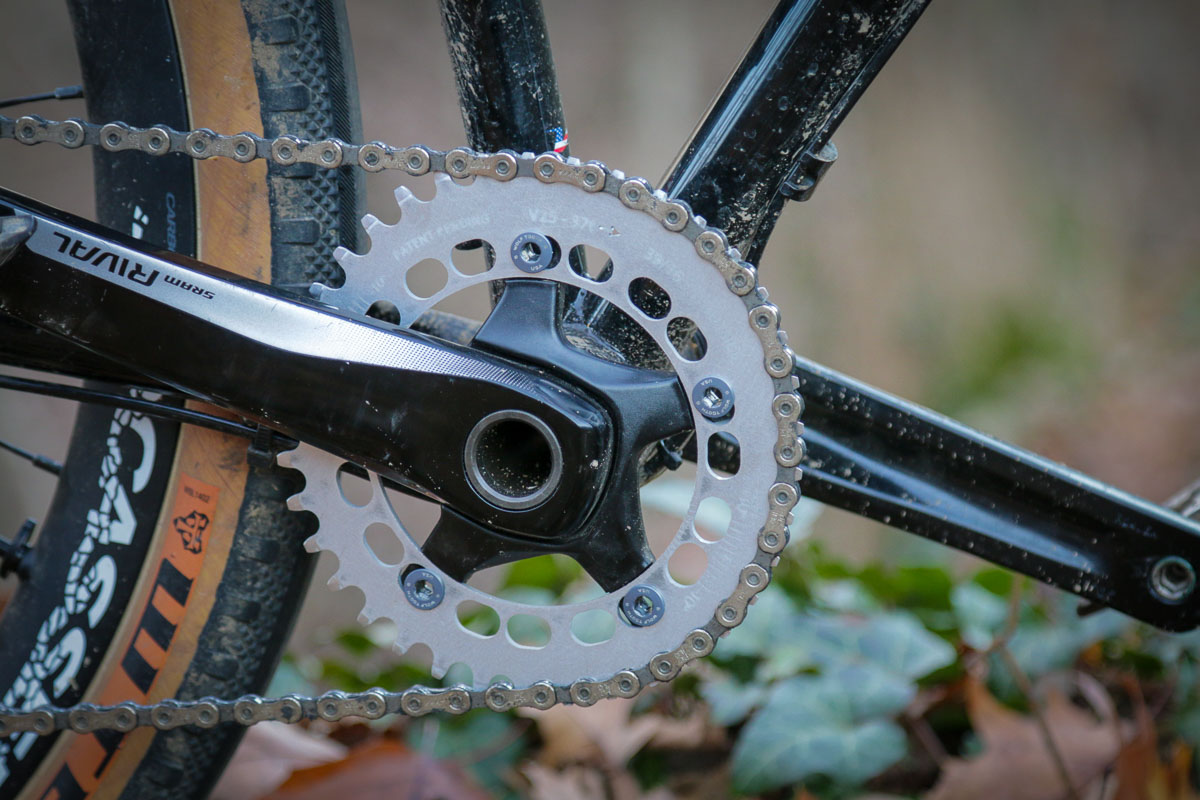
Dominant or Non-Dominant – Does it matter?
While the Spreng Reng was initially described to me as a larger ring for your dominant leg, it turns out that the dominant/non-dominant aspect might not be all that important. I asked Doug if he had stats on the average left/right power balance of riders and what would happen if someone had a perfect 50/50 balance, and his answer was surprising. He pointed out that the dominant leg might not actually be any stronger; it might just feel that way, and you should just use what you feel is your ‘strong foot’. But even if you did have a 50/50 split, he says that “you would still benefit due to a.) the additional rotational degrees of dead spot radius reduction (as compared to any other chain ring design that [Doug] is aware of), b.) an “effective” 6mm longer crank arm for one leg, and c.) additional gear torque multiplication – all of which combine to provide a faster cadence through the larger 39t radius section providing more gear rollout and therefore an increase in speed.”
Final Thoughts
In all honesty, I rode V20 because I had to – but when I was done, I couldn’t wait to get it off my bike (full disclosure, I’m not a huge fan of oval rings either). The success of the V25 is illustrated in the fact that it’s still on my bike, and I plan to ride it a while longer to continue testing. In spite of the fact that the V20 was actually the fastest on the steepest climb on the route, the lumpy pedal stroke is just not something I want to live with. But if further testing revealed that it’s not just me and the V25 was indeed noticeably faster without feeling like you’re pedaling a chainring shaped like an eggplant, the concept could indeed turn into a viable product. This is certainly one of those products you have to ride to believe.
So what does that mean for the future of the Spreng Reng concept? As far as Doug is aware, there is currently nothing else like this out there, according to both U.S. and European Patent Office searches. The ring is a long way from being offered for sale as a finished product, but Doug hopes to have the development work already completed so that a potential licensee could write a check and be manufacturing the ring almost immediately. That’s the hope, anyways. In the meantime, Doug says he plans to continue to develop the idea and refine it for multiple applications, like inner and outer rings, 1x rings, etc. Who knows, maybe you’ll see Spreng Reng-shaped chainrings on your favorite cranks in the not-too-distant future!
